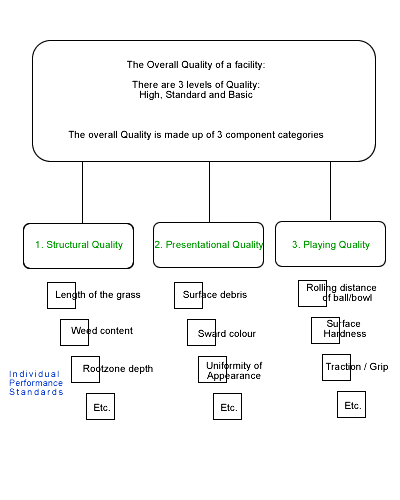The racing year is divided into two seasons:
- the Flat season (typically March - early November), and
- the National Hunt season (typically November - March).
Some courses cater for both Flat and National Hunt racing.
Quality
A racecourse surface should ideally
- be even throughout, with no potholes;
- be covered with a dense sward of desirable grasses;
- be well drained;
- have consistent firmness over the full length of the course (this is particularly important for the safety of horses);
- provide an appropriately resilient turf that cushions the impact of horses;
- provide good resistance to tearing and divoting (i.e. shear strength).
On the whole the 'going' to be aimed for is Good, with the surface being slightly firmer for the Flat season and slightly softer for the National Hunt season.
The cushioning effect can be achieved through either:
- a fescue/bent sward (on a moorland/heathland course with a pH of ~ 5 - 6) that has a fibrous layer, which will also aid its resilience to wear; or
- a perennial ryegrass sward (on a parkland type course with a pH of ~ 6 - 7) that is mown at a relatively high height of cut, say 100mm - 112mm.
To ensure that a racecourse is maintained correctly, not only during the racing season but throughout the whole of the year, a number of individual performance standards are likely to be set. The combination of these standards determines the overall quality of the racecourse and provides a means of objectively assessing the overall quality as well as the state of the 'going' ( for example, heavy, firm etc.).
Diagram to Illustrate the concept of Quality and Individual Standards

The main aim is to have a surface that is safe for both horse and rider.
The actual maintenance cost for a racecourse will depend on a number of variables, in particular the size of the racecourse and whether it is used for one type of racing or year round racing. The type of maintenance undertaken on a racecourse is similar, on the whole, to that which is undertaken on a rugby pitch.
Note: Playing Quality in the context of racecourses means racing quality.
Ball roll is mainly used on other sports facilities to determine one element of playing quality. Due to the length of the grass on a racecourse this performance standard would most likely be an inappropriate one to use.
